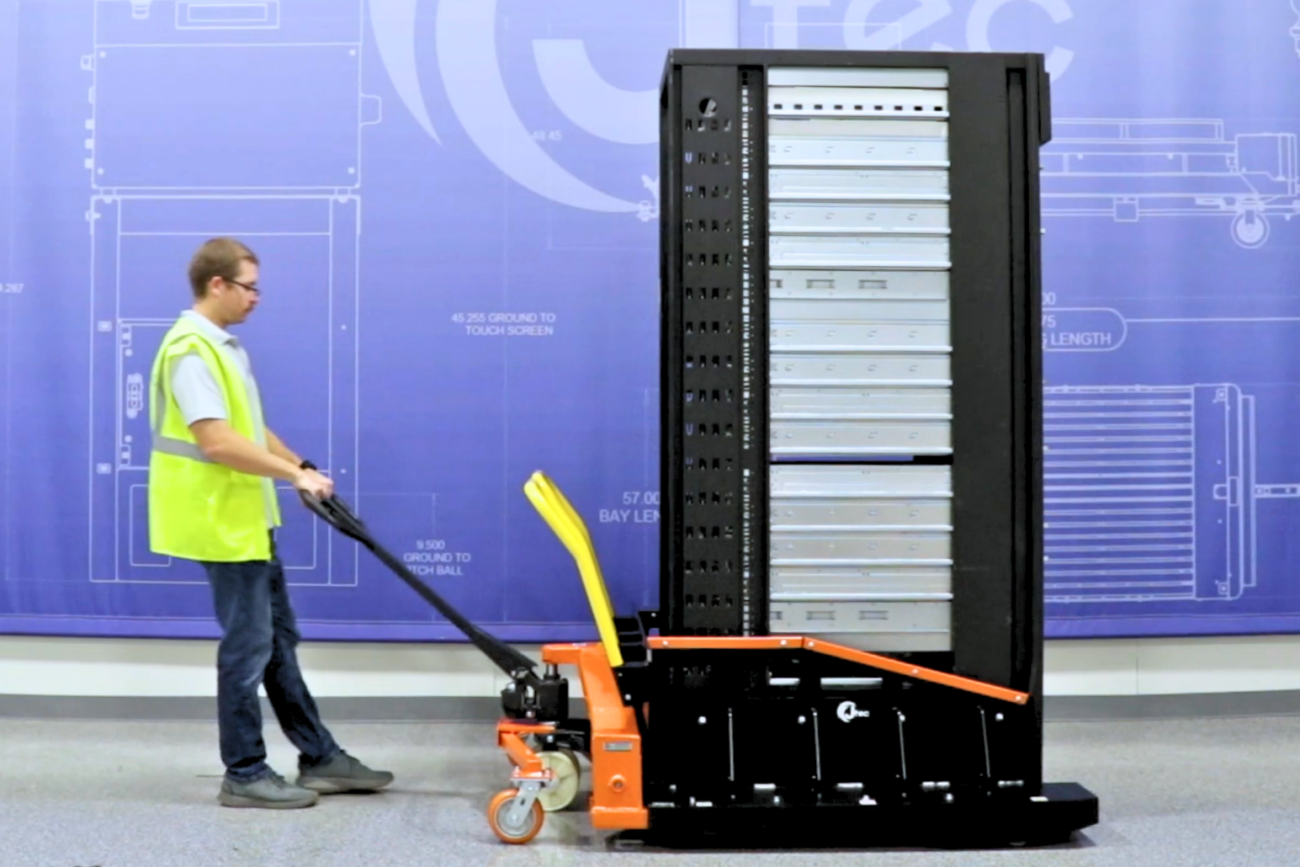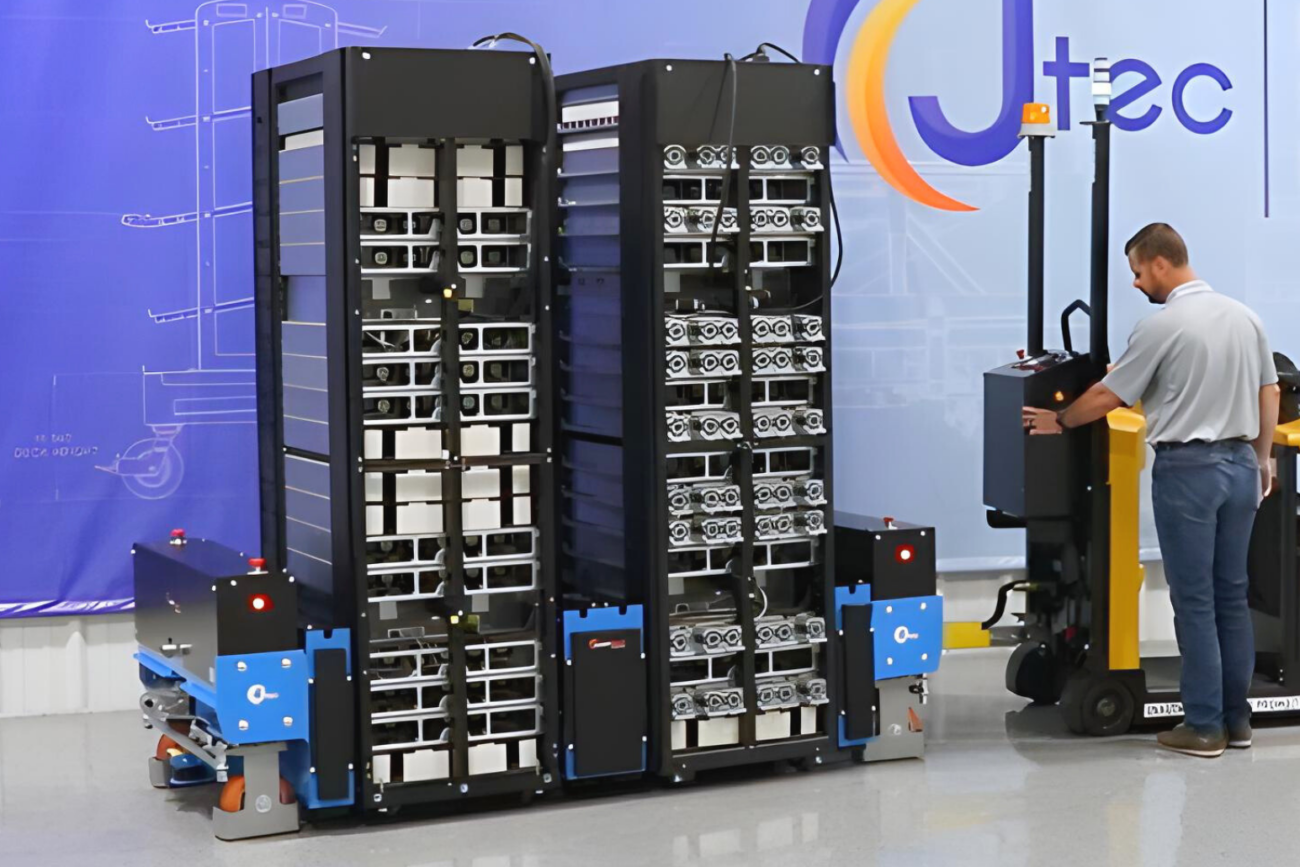The Challenge of Moving Server Racks
As data centers continue to grow as a critical industry, the need for specialized material handling solutions and updated ergonomic guidelines has become increasingly urgent. Hyperscalers (large-scale data centers) often need to move fully loaded server racks to meet operational demands. However, these racks can weigh thousands of pounds, and transporting them presents significant safety risks. In response, Jtec Industries has collaborated with hyperscalers and the Open Compute Project (OCP) to develop new server rack solutions that not only enhance safety but also improve the efficiency of these essential processes.
Through Jtec Industries’ ergonomic testing and implementation of specialized equipment, data centers can meet the rising demands of high-value server management, ensuring both operational continuity and worker safety.

Key Considerations
1) Employee Protection: By reducing risks of injuries associated with heavy lifting, awkward postures, and repetitive strain, organizations can significantly lower the incidence of workplace accidents.
2) Efficiency Gains: By implementing efficient handling systems and equipment, repetitive and time-intensive tasks are minimized, enabling quicker and smoother transport of racks across facilities. This allows employees to dedicate more time to high-value tasks.
3) Asset Protection: In data centers, ensuring the physical safety of server racks is essential. Damage to these assets, whether from improper handling, impact, or environmental factors, can lead to costly repairs and even permanent data loss.
Physical Challenges and Hazardous Methods
Moving data server racks presents notable physical demands, and current manual handling practices present several dangerous safety risks.
– A fully loaded rack can weigh as much as 1,800 kg (4,000 lb)
– Racks often lack appropriate grab points (handles), increasing the risk of injury.
– Manual handling requires two to four people, and this process places high ergonomic strain on all workers involved.
– Moving racks through doorways, floor transitions, and narrow aisles presents additional risks.
– Server racks often have four small swivel casters attached at the bottom. These are not safe: they are are not stable and cause friction.
Testing Push/Pull of Server Racks
To address these issues, we tested the forces required to push and pull fully loaded racks to see how they compare to safety standards. Using racks loaded to 3,000 pounds, we measured the push and pull forces needed over a short distance. For one type of rack, the average push force was 114 pounds, while the pull force was 136.8 pounds. For another type, the push and pull forces were slightly lower but still far above safe ergonomic limits. According to industry guidelines, most workers shouldn’t push or pull more than 36 pounds at a time, and for many, the safe limit is even lower. This shows how physically demanding it can be to move these heavy racks, even for experienced workers.
To make rack handling safer, several tools and guidelines can help assess and reduce risks. For example, using proper ergonomic standards, smooth floors, wider doorways, and adding simple features like handles or grab points on racks can make a big difference. In some cases, using powered equipment or automated systems is the best way to minimize physical strain and improve safety. These practical steps can help protect workers and make the job more efficient.

Jtec’s New Ergonomic Solutions
Now that we understand the challenges and risks association with push and pull forces, we can explore the innovations Jtec created that make rack handling safer and more efficient. Jtec Industries worked with hyperscalers to develop a range of equipment tailored to different needs.
Manual Data Jack
Ideal when powered equipment isn’t feasible, it functions just like a standard material jack.
Powered Data Walkie
This powered lift allows for easier, safer movement of loaded racks with a single operator, reducing physical strain on workers.
Powered Data Cart
For precision handling, our dual-bay cart moves multiple racks at once. This is ideal for tuggers and automated mobile robots.
In Conclusion
Beyond immediate safety benefits, industry-wide adoption of ergonomic standards and improved handling equipment contributes to long-term efficiency gains. When workers are supported by safe, reliable equipment, data centers can achieve faster throughput and reduce equipment wear. Additionally, careful planning—like optimizing floor conditions, widening access points, and training staff on safe handling—can mitigate common hazards and create a more resilient work environment. Emphasizing safety and ergonomics across data centers helps to secure critical infrastructure, foster a culture of safety, and ultimately build a more sustainable and productive industry.



